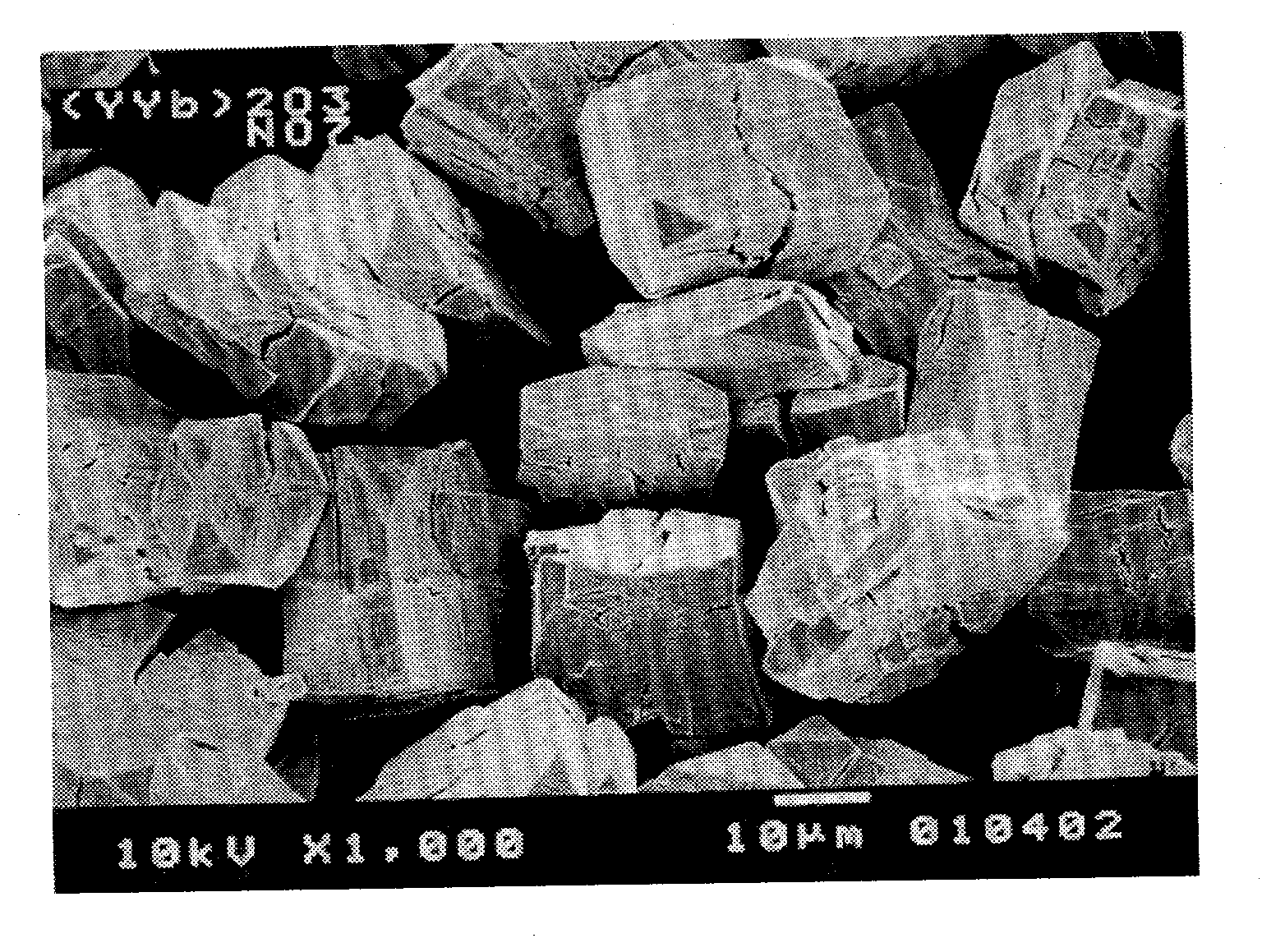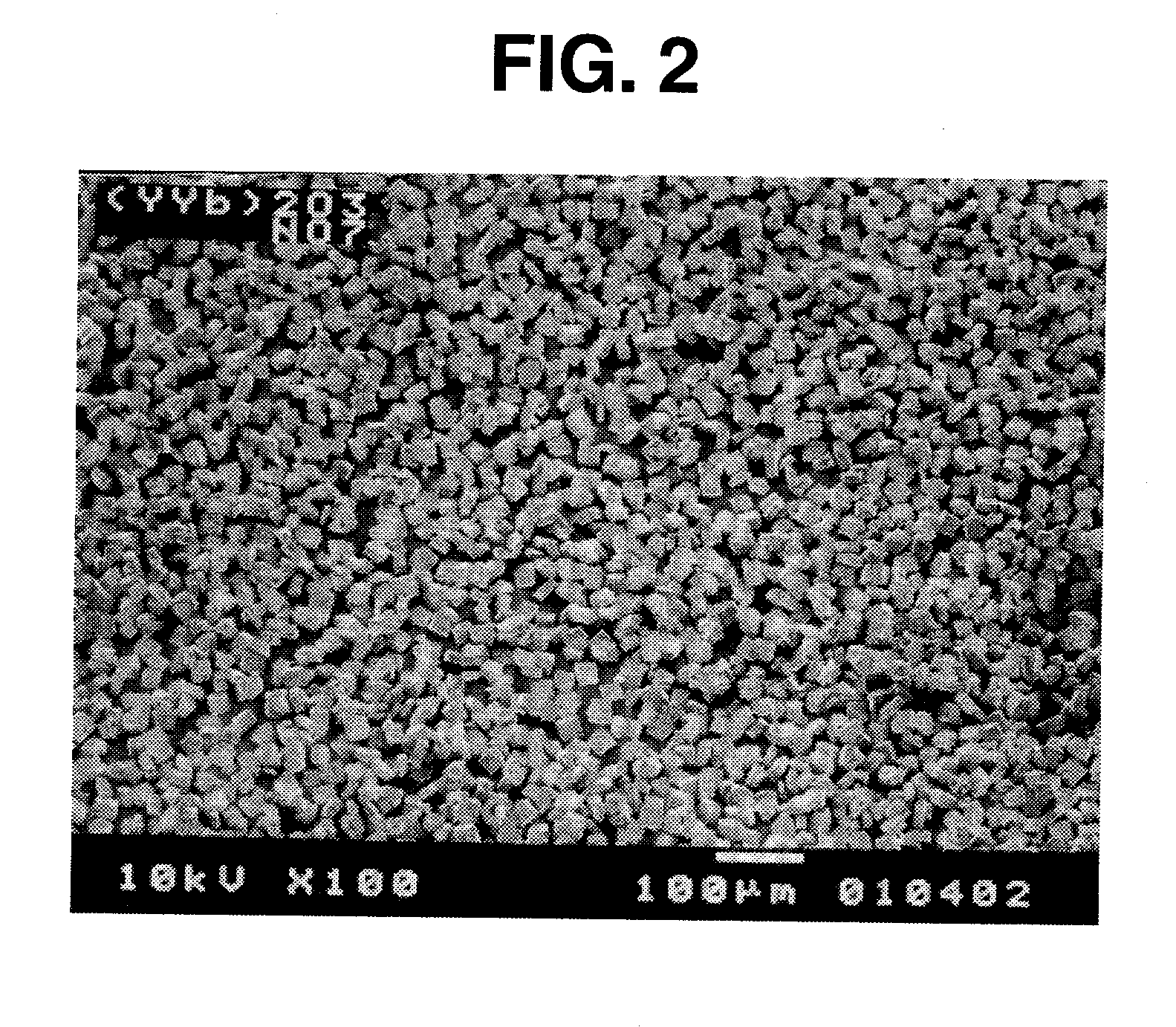Thermal spray particles and sprayed components
a technology of sprayed components and spray particles, which is applied in the direction of lanthanide oxides/hydroxides, cellulosic plastic layered products, natural mineral layered products, etc., can solve the problems of large repose angle, poor fluidity, and difficulty in producing particle-free dense components, and achieves better adhesion and corrosion resistance, high density and strength
- Summary
- Abstract
- Description
- Claims
- Application Information
AI Technical Summary
Benefits of technology
Problems solved by technology
Method used
Image
Examples
example 1
[0041] Oxalic acid (H.sub.2C.sub.2O.sub.4.2H.sub.2O), 794.3 g, was dissolved in 9.27 dm.sup.3 of deionized water, to which 900 cm.sup.3 of 28% aqueous ammonia was added. With stirring, the solution was heated at 75.degree. C.
[0042] Separately, 4.29 dm.sup.3 of a mixed solution of ytterbium nitrate and yttrium nitrate (Yb concentration 0.28 mol / dm.sup.3, Y concentration 0.42 mol / dm.sup.3, free acid concentration 1.40 mol / dm.sup.3) was prepared at room temperature. With stirring, this solution was poured to the oxalic acid solution, which had been prepared and heated above, over about one minute. The solution mixture was further stirred for 2 hrs while keeping at a temperature of 72 to 75.degree. C.
[0043] Thereafter, the precipitate formed was collected on a Buchner funnel and washed with 15 dM3 of deionized water. The precipitate thus collected was air dried for 2 hours. The precipitate or oxalate was placed in a porcelain crucible and fired in air at 900.degree. C. for 2 hours, wher...
example 2
[0046] Particles for thermal spraying were prepared as in Example 1 except that a ytterbium nitrate solution (Yb concentration 0.70 mol / dm.sup.3, free acid concentration 1.40 mol / dm.sup.3) was used instead of the mixed solution of ytterbium nitrate and yttrium nitrate. The particles were measured for physical properties including particle diameter and crystallite size, with the results shown in Table 1.
[0047] Using an argon / hydrogen gas plasma, the particles were sprayed to an aluminum alloy substrate to form a coating of 210 .mu.m thick thereon. The coating was examined for surface roughness and impurity content, with the results shown in Table 2.
[0048] Like Example 1, the particles obtained in Example 2 had an angular shape (regular polyhedral shape), though photomicrograph is omitted.
PUM
| Property | Measurement | Unit |
|---|---|---|
| Fraction | aaaaa | aaaaa |
| Length | aaaaa | aaaaa |
| Size | aaaaa | aaaaa |
Abstract
Description
Claims
Application Information
 Login to View More
Login to View More - R&D
- Intellectual Property
- Life Sciences
- Materials
- Tech Scout
- Unparalleled Data Quality
- Higher Quality Content
- 60% Fewer Hallucinations
Browse by: Latest US Patents, China's latest patents, Technical Efficacy Thesaurus, Application Domain, Technology Topic, Popular Technical Reports.
© 2025 PatSnap. All rights reserved.Legal|Privacy policy|Modern Slavery Act Transparency Statement|Sitemap|About US| Contact US: help@patsnap.com



